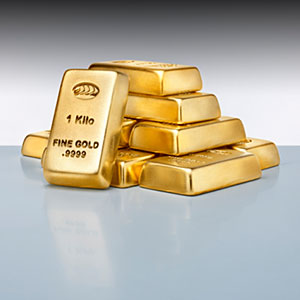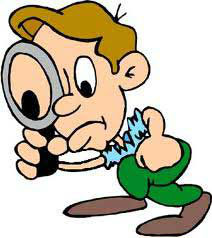How gold could fall below $500 an ounce Is
Post# of 63897

How gold could fall below $500 an ounce
Is a drop from more than $1,200 even possible? Yes, under these conditions, a new forecast says.
 By Mark Hulbert, MarketWatch
By Mark Hulbert, MarketWatch 
If the 10-year Treasury yield rises to 5 percent, gold will fall to $471 an ounce.
And if that yield rises to just 4 percent, from its current 2.8 percent, gold will still plunge -- to $831.
Those sobering forecasts come from an econometric formula based on the last decade's relationship between gold and interest rates . Assuming this past is prologue, the only way for gold to make it back to its all-time high above $1,900 an ounce is for the 10-Year Treasury yield to fall to 1 percent.
To be sure, a comprehensive model of gold's price needs to include more than just interest rates. But, according to Claude Erb, who conducted these statistical analyses, we should not be too quick to reject his simple "behavioral" model relating gold's price to the 10-Year Treasury yield.
Erb is a former commodities portfolio manager for Trust Company of the West and the co-author (with Campbell Harvey, a Duke University finance professor) of a recent National Bureau of Economic Research paper entitled " The Golden Dilemma. "
Erb says we should not blithely dismiss his simple gold-interest rate model because it has had impressive explanatory power in recent years. Consider a statistic known as the r-squared, which reflects the degree to which fluctuations in one thing predicts or explains changes in another.
The r-squared ranges between 0 and 1, with 1 indicating the highest degree of predictive power and 0 meaning that there is no detectable relationship.
In the case of the gold-interest rate correlation over the last decade, Erb told me in an interview, the r-squared is a very high 0.78. ( Click here for a summary of his findings. )
Most correlations on Wall Street don’t come anywhere close to being that high. Indeed, many of the drugs that get FDA approval have lower r-squareds between their use and positive medical outcomes.
Imagine using Erb's model one year ago to forecast where gold would be trading when the 10-year yield rises to 3 percent. At the beginning of 2013, of course, that yield stood at 1.76 percent, and gold bullion stood at nearly $1,700. He told me that the model at that time would have predicted bullion's price would be $1,196.70 when the 10-year yield hit the 3 percent point.
That point was reached on Dec. 26 of last year, and the London Gold Fixing price on that day stood at $1,196.50.
That counts as hitting the bulls eye.
Impressive as his simple model has been, however, Erb stresses that he is not recommending that gold traders focus only on interest rates when determining whether they should be in or out of the gold market. Nevertheless, he reminded us, the gold bulls shouldn't now be claiming that bullion responds to lots of factors besides interest rates. That's because it was the gold bulls who were quick -- so long as interest rates were declining -- to claim that the impressive gold-interest rate correlation justified a higher gold price.
As Erb puts it, "if gold traders want to live by the sword, consistency requires them to be ready to die by it as well."
What factor or factors does Erb suggest that gold traders focus on? The one that he and his co-author Campbell Harvey suggested in their NBER study is the ratio of gold's price to the level of the consumer price index. Since that ratio historically has averaged 3.4-to-1, a rule of thumb could be that gold is overvalued when the ratio is above that level and undervalued when below.
Currently, the gold-CPI ratio stands at 5.3-to-1, suggesting gold remains quite overvalued. That in turn suggests that gold's fair value is just under $800 an ounce.
More from MarketWatch
 (0)
(0) (0)
(0)NASDAQ DIP and RIP
Here is the best word that describes what i do here.
Intuitive;
means having the ability to understand or know something without any direct evidence or reasoning process.
I was born with it, I'm truly blessed!
Alway's searching for winners'
